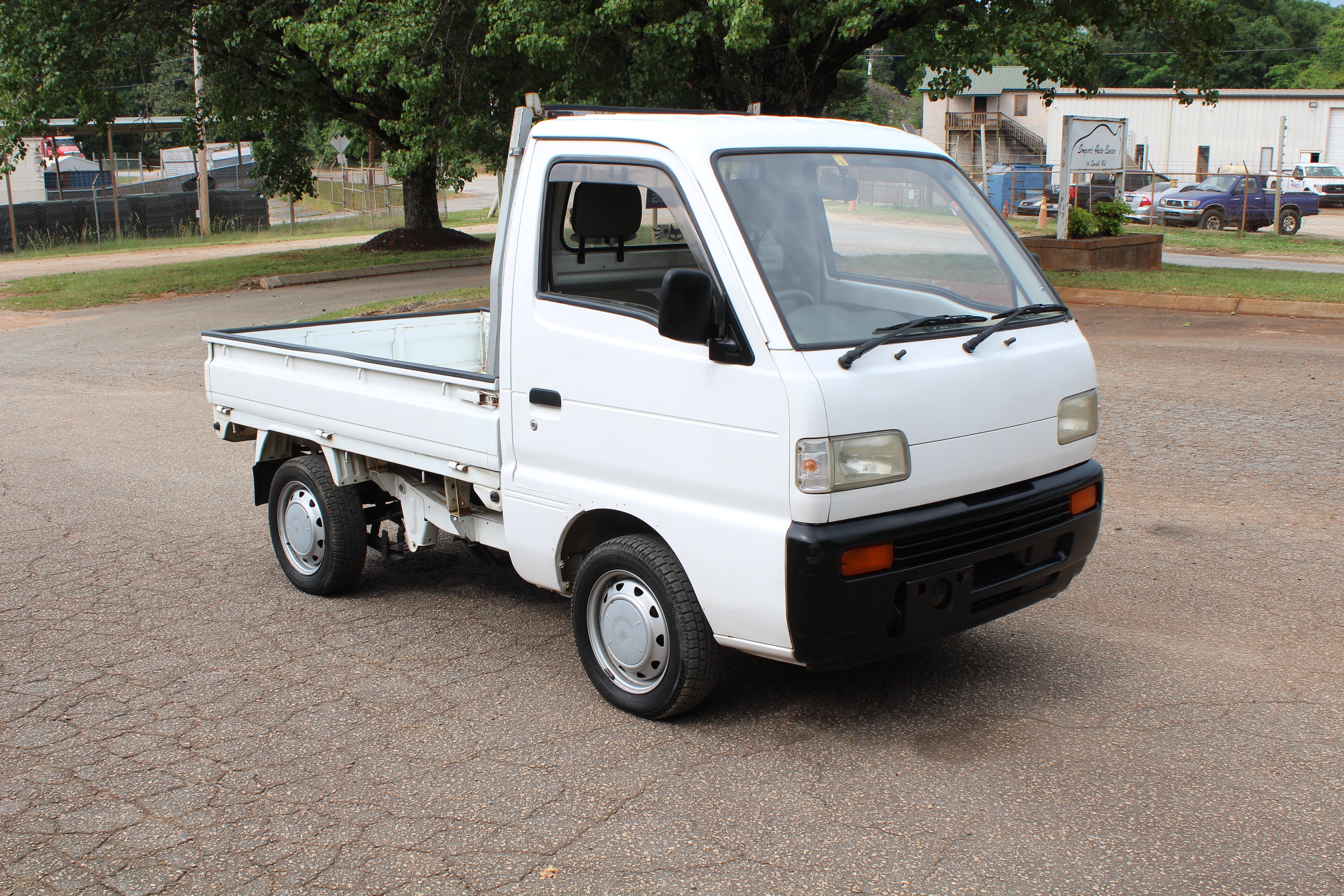JDM 98 Suzuki Every Join High Roof Manual 2WD Van has just under 49k miles
These vans are hard to come by and hard to keep in stock, they are alot of fun and super cool. Runs and drives great. 0 Rust and just had a full service done 2500 miles ago
Dent on left a pillar, scuff on front bumper corners, dent under left door, dent on rear left quarter behind sliding door, scuff on rear bumper, rear hatch has some damage scuffs/scratches/dents, looked like rear hatch caught something but still opens and closes, small scratch on right sliding door, scuff/dings on driver door. Please look at all pictures carefully as all flaws are pictured.
Contact Rob 864-505-5621
For financing options please visit my website and no trades..thanks
The ninth generation Carry (and third generation Every) appeared in September 1991. The 657 cc F6A engine remained from the previous generation, but an all-new bodywork was much smoother, originally with slim, small rectangular headlights. The chassis was largely unchanged for the truck (albeit with a somewhat longer wheelbase), but the vans had a considerably longer wheelbase and an engine mounted midships, just ahead of the rear axle. Chassis codes changed accordingly, and were now different for the Carry and the Every. The trucks are DC/DD51T and the vans are DE/DF51V ("DD" and "DF" for four-wheel drive versions). Two different front treatments were available, one with small rectangular aerodynamic headlights and one with large, round units (used on lower-spec models).
The ninth-generation Carry received a very gentle facelift in September 1993, including a switch from front drum brakes to discs on all models. Two months later, the Carry Van line switched to the Every nameplate and the division between trucks and vans was made clearer. Another light change occurred in July 1995, when the front turn signals were changed from clear to amber and the wheel bolt pattern was changed from 4x114.3mm to 4x100mm. The ninth generation continued to be built until 1999. Most export markets continued to receive the previous generation Carry with bigger engines and most commonly with van bodywork. The older Super Carry is generally more rugged than the DE/DF51, which was fitted with a coil sprung De Dion rear axle not as suitable for carrying heavy loads. In those rather few foreign markets where the ninth generation Carry was available, it was sold as the SK306 and with a version of the 657 cc engine used in the Japanese domestic market. In late 1997, the retro-styled Suzuki Every C arrived.


























































